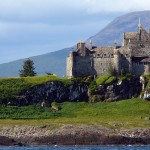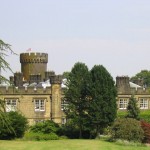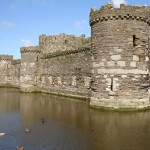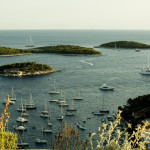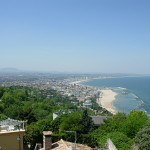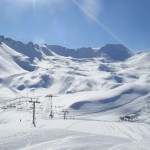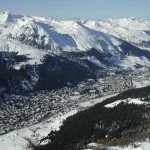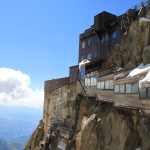Natural And Man-Made Landmarks Of Normandy, France
Normandy is a gentle and peaceful region on the North coast of France whose coast looks out across the English Channel with, for the most part, long low sand dunes and flat pastures. In areas however, there are prominent natural and man-made landmarks to discover, with a coastline some 600km long the gentle beaches occasionally give way to impressive geological formations and the area’s turbulent military past has left it dotted with a history of prominent and often beautiful fortifications.
Mont Saint-Michel
Mont Saint-Michel is perched on top of a small rocky tidal island, about half a mile from the coastline. Originally the rock formation would have been connected to the mainland before rising sea levels and erosion cut it off. The first known use of the island was as a Gallo-Roman stronghold during the 6th-7th centuries. It then changed hands several times, taken by the Franks then gifted to the Bretons before falling in to Norman hands. The English repeatedly tried to take it during the Hundred Years War but failed. During this time, the stronghold grew from a small structure perched at the top of the rocky mound to an expansive walled fortification encompassing the entire island topped with an impressive Romanesque church and concealing underground crypts and chapels, designed in part to hold the weight of the outer structure.

Mont Saint Michel, Normandy, France / cc licensed ( BY NC SA ) flickr photo shared by Djof
Chateau Gaillard
Chateau Gaillard stands on a cliff-faced hill high above the small town of Les Andelys. The castle was built in under a year – a remarkable feat at a time when major castles typically took around 10 years to build – under the instruction of Richard the Lionheart, King of England at the time when Normandy was under English control. It was built to defend the recently retaken Normandy from the French king, Philip II. The castle represented state of the art fortifications for the time, although lacking a well and being built on chalk left it susceptible to siege and undermining. Sure enough, after Richard’s death the castle was besieged by French forces and ultimately fell after a long siege when the outer walls were undermined. Despite being a ruin today, it is still an impressive site to visit.
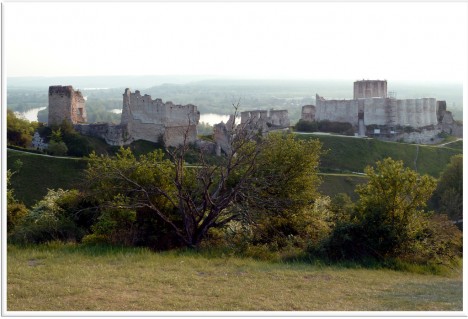
Chateau Gaillard, Normandy, France / cc licensed ( BY NC SA ) flickr photo shared by abac077
The Cote d-Albatre
The Cote d-Albatre, literally the Alabaster Coast, is a stretch of coastline in Normandy notable for its imposing chalk cliffs, reaching up to 120 metres in some areas and a regular subject for impressionist painter Claude Monet. Traveling along this impressive coastline you will discover some remarkable geographic formations. Near Etrat, for example, is the Manneporte, a huge natural arch some 90 metres high jutting out into the sea as depicted by Monet in his oil painting of the same name.
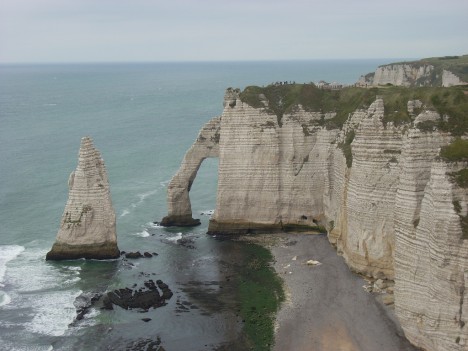
The Cote-d-Albatre, Normandy, France / cc licensed ( BY NC SA ) flickr photo shared by arctic_flower
Longues-sur-Mer Battery
During the Second World War, Germany built a network of new costal fortifications along the French coastline. Many of these concrete bunkers housing artillery and shelter for German forces joined by networks of trenches are still intact. One example of these is the Longues-sur-Mer battery in Normandy, now classified as a historical monument. The complex consisted of a command post and four bunkers, each housing a permanent 150mm gun, still intact. The battery overlooks the channel from on top of a 65 metre high cliff, giving a panoramic view of the beaches below where the D-Day landing expeditionary force came ashore.

Longues-sur-Mer Battery, Normandy, France / cc licensed ( BY NC SA ) flickr photo shared by mdl70
This article was written by Jane for Simply Chateau, a site created to promote and highlight the range of excellent value for money luxury villas available in France.
Category: France, Travel Tips






